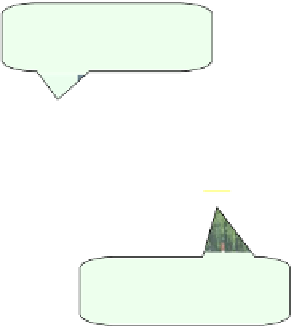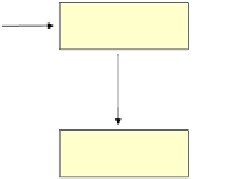Information Technology Reference
In-Depth Information
ª ºª
0 1111 0
Y1
ºª º
« »«
»« »
Integer approximation of DCT
together with quantization
process
-
No mismatch between encoder
and decoder
2
1
1
2
X1
« »«
»« »
« »«
Y2
1
1
1
1
»« »
X2
« »«
»« »
« »«
Y3
1
2
2
1
»« »
X3
¬ ¼¬
¼¬ ¼
Smooth texture in residue
Æ
large transform block is
better
Adaptive block-size transform
(High Profile)
-
Adaptive 4x4/8x8 transform block
size with quantization matrix
Allow better adaptation to local
signal statistics of HDTV signal
8x8
4x4
Complicated texture in
residue
Æ
small transform
block is better
Fig. 38
Integer Transform
In entropy coding of AVC/H.264, high compression is achieved by encoding the
symbols adaptively and using the knowledge (Context) in connection with coding
states such as the information on the surrounding block data as well as variable
length coding of coded symbols directly. Two types of entropy coding methods exist
in AVC/H.264: Context Adaptive Variable length Coding (CAVLC) and Context
Adaptive Binary Arithmetic Coding (CABAC). The CAVLC method is based on
Huffman tables for encoding the symbols and generates contexts adaptively.
N
X
+23
-4
+11
0
0
+8
-3
0
0
+1
0
-1
0
0
0
0
+23 -4
+23 -4
+8
+8
-3
-3
Zigzag Scan
+11
+11
0
0
0
0
0
0
0
0
0
0
-1
-1
0
0
Coeff_token (N
x
, L
x
):
N
x
: Number of non-zero coeff.
L
x
: Number of coeff. w/ abs. level = 1
Huffman table
Selection (B)
+1
+1
0
0
0
0
0
0
Transform coefficients
to be coded
Huffman coding
of
coeff_token
Huffman coding
of level data
Huffman coding
of run data
Coded
bitstring
N
B
Neighboring
Coding status
Huffman table
Selection (A)
N
A
N
X
CAVLC encodes zigzag scanned transform coefficients with adaptive VLC table selections.
Fig. 39
CAVLC



























